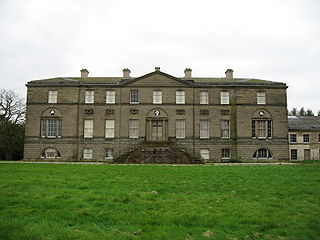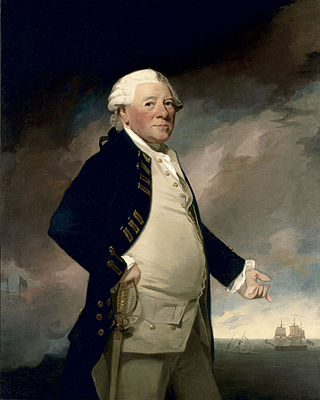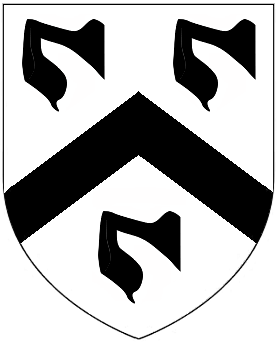
The Perring Baronetcy, of Membland in the County of Devon, was created in the Baronetage of the United Kingdom on 3 October 1808 for the Lord Mayor of London John Perring. [1] The title became extinct on the death of the fourth Baronet in 1920. [2]

The Perring Baronetcy, of Membland in the County of Devon, was created in the Baronetage of the United Kingdom on 3 October 1808 for the Lord Mayor of London John Perring. [1] The title became extinct on the death of the fourth Baronet in 1920. [2]

Earl of Kimberley, of Kimberley in the County of Norfolk, is a title in the Peerage of the United Kingdom. It was created in 1866 for the prominent Liberal politician John Wodehouse, 3rd Baron Wodehouse. During his long political career, he notably held office as Lord Lieutenant of Ireland, Secretary of State for the Colonies, Secretary of State for India and Secretary of State for Foreign Affairs. He was succeeded by his son, the second Earl. At first a Liberal like his father, he later joined the Labour Party, becoming the first Labour member of the House of Lords. His eldest son, the third Earl, represented Norfolk Mid in the House of Commons as a Liberal. Since 2002, the titles are held by the latter's grandson, the fifth Earl.

Earl of Stradbroke, in the County of Suffolk, is a title in the Peerage of the United Kingdom. It was created in 1821 for John Rous, 1st Baron Rous, who had earlier represented Suffolk in the House of Commons.
Baron Mottistone, of Mottistone in the County of Southampton, is a title in the Peerage of the United Kingdom. It was created in 1933 for the soldier and Liberal politician J. E. B. Seely. He was the fourth son of Sir Charles Seely, 1st Baronet, and the uncle of The 1st Baron Sherwood. The 4th Baron Mottistone succeeded his half-brother in 1966. He notably served Lord Lieutenant of the Isle of Wight from 1986 to 1995 and as the last governor of the Isle of Wight between 1992 and 1995 and was succeeded by his son as the fifth baron, in 2011. In turn, the fifth baron was succeeded by his elder son in 2013.

Baron Carnock, of Carnock in the County of Stirling, is a title in the Peerage of the United Kingdom. It was created in 1916 for the former Permanent Under-Secretary in the Foreign Office, Sir Arthur Nicolson, 11th Baronet.

Baron Chetwode, of Chetwode in the County of Buckingham, is a title in the Peerage of the United Kingdom. It was created in 1945 for the noted military commander Field Marshal Sir Philip Chetwode, 7th Baronet. As of 2014 the titles are held by his grandson, the second Baron, who succeeded in 1950. He is the eldest son of Captain Roger Charles George Chetwode, who was killed in the Second World War.
There have been three baronetcies created for members of the Anstruther family, two in the Baronetage of Nova Scotia and one in the Baronetage of Great Britain. Two of the creations are extant while one is extinct.

The Broughton, later Broughton-Delves, later Broughton Baronetcy, of Broughton in the County of Stafford, is a title in the Baronetage of England. It was created on 10 March 1661 for Sir Brian Broughton, of Broughton Hall, near Eccleshall, Staffordshire, High Sheriff of Staffordshire from 1660 to 1661 and the member of an ancient Staffordshire family.
There have been three baronetcies created for members of the Clerke family. One creation is extant as of 2008.
There have been a number of creations of baronets with the surname Smith.

The Antrobus Baronetcy, of Antrobus in the County Palatine of Chester, is a title in the Baronetage of the United Kingdom.
The Egerton, laterGrey Egerton, later stillEgerton baronetcy, of Egerton and Oulton in the county of Chester, is a title in the Baronetage of England held by the senior patrilineal branch of the Egerton family.

There have been two baronetcies created for members of the Trevelyan family, one in the Baronetage of England and one in the Baronetage of the United Kingdom. As of 2014, both creations are extant.

There have been seven baronetcies created for persons with the surname Parker, three in the Baronetage of England, two in the Baronetage of Great Britain and two in the Baronetage of the United Kingdom. Two of the creations are extant as of 2008. Though none of the different families of baronets were related, several supplied a number of flag officers to the Royal Navy.
There have been six baronetcies created for persons with the surname of Lawson, two in the Baronetage of England and four in the Baronetage of the United Kingdom. Two creations are extant as of 2010.

There have been twenty one baronetcies created for persons with the surname Williams, eight in the Baronetage of England, three in the Baronetage of Great Britain and ten in the Baronetage of the United Kingdom. Only six of the creations are extant as of 2017.
The Miles Baronetcy, of Leigh Court in the County of Somerset, is a title in the Baronetage of the United Kingdom. It was created on 19 April 1859 for the banker and Conservative politician William Miles. His son, the second Baronet, was also a banker and Conservative politician. The family's bank, founded in 1750, eventually became part of NatWest.

There have been four baronetcies created for members of the Welsh Philipps family, one in the Baronetage of England and three in the Baronetage of the United Kingdom.

There have been three baronetcies, all in the Baronetage of England, created for members of the Mansel family, which played a major role in the early re-settlement of the Gower Peninsula, in Glamorgan, Wales. Only one creation is extant as of 2008.

The Smith, later Hamilton-Spencer-Smith, later Spencer-Smith Baronetcy, of Tring Park in the County of Hertford, is a title in the Baronetage of the United Kingdom. It was created on 11 June 1804 for Drummond Smith, with remainder to the heirs male of his niece Augusta, wife of Charles Smith, MP, of Suttons, Essex. The latter was a descendant of Robert Smith, of Ilminster, from whom the Smith-Marriott baronets are also descended. The fifth Baronet, was a member of the Military Inter-Allied Commission of Control from 1920 to 1924. The sixth Baronet discontinued the use of the surname of Hamilton.